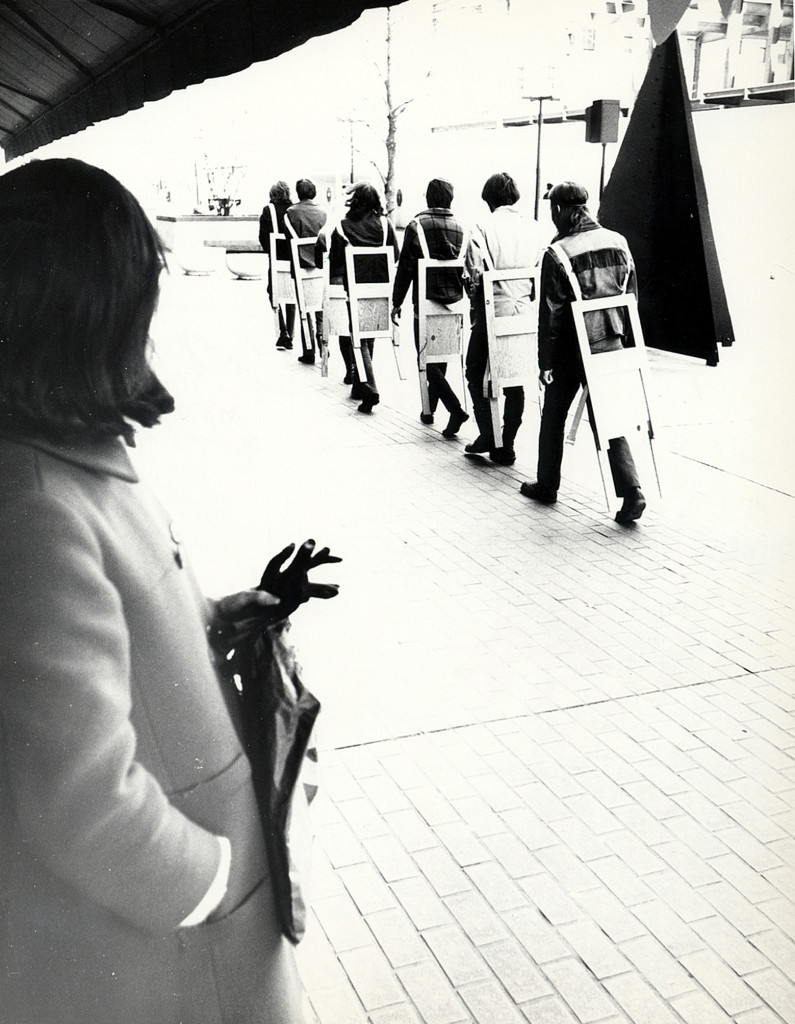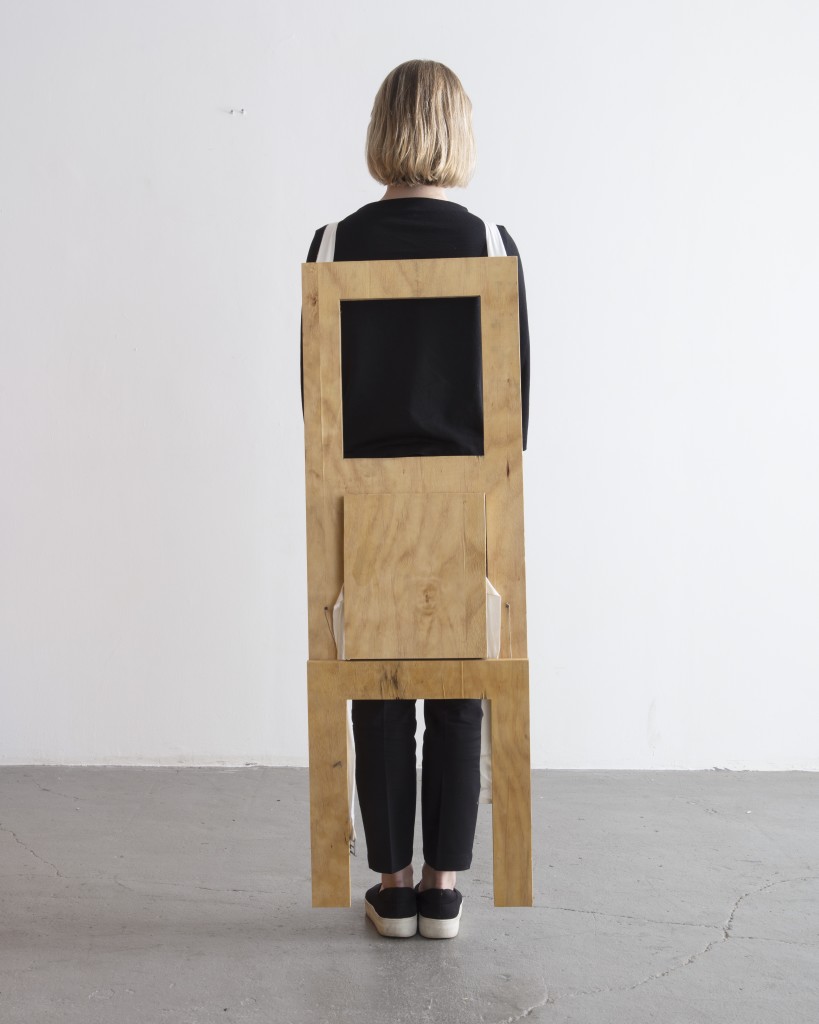By Radical Design: Gianna Pettena // Profile of the Artist
by Kostas Prapoglou

Florence-based architect, artist, and critic, Gianni Pettena belongs to the original core group of the Italian Radical Design movement, and was a member among the Archizoom Associati, Superstudio, and UFO groups. In 1968, he graduated from the University of Architecture in Florence, where he later taught History of Contemporary Architecture until 2008. Showing a preference for both writing and the visual arts quite early in his career, Pettena was invited to the United States as an artist-in-residence at the Minneapolis College of Art and Design and at the University of Utah in Salt Lake City in 1971, where he initiated multiple projects and exhibitions. As a critic and architecture historian, Pettena has organized exhibitions on contemporary architecture around the world, and was involved in a number of critical publications, among them L’anarchitetto (1973) and Radicals: Architettura e design 1960–1975 (1996). His work has been the subject of many international museum exhibitions, such as at the Mori Museum (Tokyo), the Barbican Center (London), and the Centre Pompidou (Paris and Metz), as well as in major exhibitions such as the Venice Biennale, and Manifesta in Zürich. Petenna together with visionary designer and founding member of UFO, Lapo Binazzi, will be the subject of an exhibition at R & Company in New York this November.
I invited Gianni Petenna to discuss his contribution to the Italian Radical Design movement, and other collectives and groups in Italy—below is a transcription of our conversation, which highlights his inspirations and ideas on architecture and design, and how these concepts have transformed over the last six decades of his practice.
Kostas Prapoglou: I wanted to begin with how the interplay of architecture and visual arts accompanied your modes of expression over the course of your career—can you trace these interests?
Gianni Pettena: The history of the twentieth-century vanguard often recounts how theorists, poets, and philosophers opened the way, which was then followed by visual artists, and lastly, architects. This lineage is perhaps due to the fact that the burden of functionality made the path harder to realize architectural practice.
In a way, architecture has always been considered the synthesis of the arts that preceeded movements in culture, and for me, the language of architecture—the language of the project—was in this way all-encompassing: it included and contained every manifestation of thinking, every narrative. This is the initial idea that encouraged the cross-disciplinary practice of my work, first as an architecture lover.
Thus, even though I did not always and completely refuse functionality, I favored the story (i.e. the narrative), that the idea of a project in place was designed to be developed, and that it would diligently respond to the purpose of carrying out a use—of profiting from invested capital, while producing architecture or design. Therefore, perhaps one can say that my work—like the work of artists, such as Gordon Matta-Clark—belongs to an environmental art more than architecture, even if produced by licensed architects.
KP: To what extent do you see your involvement of collectives and groups, such as the Italian Radical Design movement—for example Superstudio and UFO, with which you were closely associated?
GP: Much of the conceptual and linguistic scholarship related to the field of architecture and design was produced by students and young graduates of the University’s Architecture Department in Florence in the 1960s, as well as by Archigram or Hollein-Pichler. Between Archizoom (Branzi & Co), Superstudio (Natalini & Co.), UFO (Binazzi & Co.), and myself, we theorized our generation’s vision by mean of writing and images, and did so in very different ways. Among us, we never forgot the presence of Ettore Sottsass, trained in the spirit of rationalism and functionalism, who taught us—through his work and friendship—that real does not solely mean rational. Rather, with each project we were taught that we could recount ourselves with our desires, emotions, passions…with a project, we could have made love. [He also taught us] that for each day spent designing as a professional, one must have found the time, every day, to freely draw their own fantasy world, without rules or limitations!
KP: The conceptual approach and interpretation of architecture has been part of your criticism, as well as part of your process to understanding significant parameters, such as individuality and social evolution. How do you see contemporary architecture shaping up today?
GP: The 1960s and 70s had been years of juxtaposition between modernist heritage—initiated and grown between the First and Second World War—and the late period of its reconstruction. Philosophical and ideological theorizations, organized words and thoughts, as well as innovative behaviors were suitable for the interpretation of these new times, desires, and visions. All of these aspects translated into architecture, and the ideas of architecture, which can be defined as “architecture and radical design.” Contemporary research (think about the current Venice Biennale) comes with risks that radicals already perceived and avoided during the 60s: the necessity and need to enrich and revise traditional ways of thinking based on a constantly evolving architectural language. However, today, the Biennale typically presents research and social projects related to needs of developing countries; which in many ways resists the undercurrent of research topics that for many years enlivened the discourse of architectural practice. The risk of a narrow, socially-concerned research focus in contemporary art can, in this way, inadvertently forget or ignore the prevalence of certain research projects that were initiated during this time, which included socially concerned studies and related developments in criticism and language.

KP: Do you detect any differences or similarities between the criticism and architecture you developed, and their contemporary counterparts?
GP: Yes—during the 60s and 70s, architecture magazines were covering completed projects, research, and visual arts (publications such as Architectural Digest, Domus, Casabella, etc.) including interactions between these practices. Today, architecture magazines often only cover finished or ongoing projects. Nothing else. Yet, the architecture world is much richer in terms of events, debates, experimentations! It can be said that the funding structure of contemporary publications, promoted by advertisements, has had an effect of the standard of criticism, which is often geared to pleasing sponsors in place of promoting knowledge of the field, and its development.
KP: One of your Wearable Chairs, which was part of your 1971 performance, will be on view at EXPO CHICAGO in September, and you will also participate in the /Dialogues Art & Architecture Symposium. Your contributions to the movement will also be featured in an upcoming SuperDesign publication which will release this October, and you will be the subject of an exhibition at R & Company in New York in November. How do you expect younger audiences to react and interact with you and your work?

GP: For the last twenty years, younger audiences have reached out to me to discuss issues of conceptual and linguistic strategy. With new generations, the discourse materializes in publications of books and articles, exhibitions, and recurrent symposia. Such a prosperous relationship infuses me with enthusiasm and energy that I can channel into ongoing dialogues enriching my life and practice, as an almost-eighty year old man.